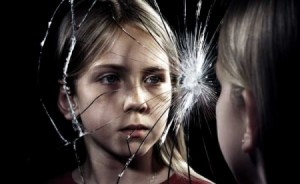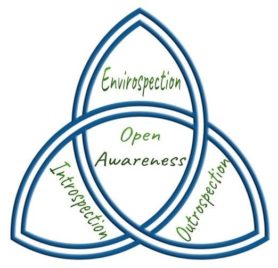
This article describes NLP’s Visual-Kinaesthetic Dissociation Technique (also known as the Fast Phobia Cure and Rewind Technique).
(For information on treating Post Traumatic Stress Disorder using Visual-Kinaesthetic (V-K) Dissociation, click here)
Disclaimer: This is an advanced NLP technique and should be applied only by qualified NLP Practitioners who are experienced therapists or coaches.
V-K Dissociation helps to eliminate the effects of traumatic memories. It can be deeply healing for individuals who suffer from PTSD, with results being both rapid and sustainable. Intense fear of people, animals, objects or situations that are not harmful or dangerous (know as a phobia) is most often easily treated with this technique.
V-K Dissociation enables people who suffer from phobias or traumatic memories to reprogram their brain’s response to the original (causal) experience. It does this through separating (dissociating) mental pictures (V) and their associated feelings (K) so that irrational fear and behaviour in specific contexts are no longer triggered.
The process includes facilitating a safe and relaxed state, establishing a dissociated perspective, and then guiding the traumatised person to reprocess the traumatic memory so that they are able to update the meaning that their unconscious mind equates with that experience in present time. The reprogramming effect of this technique integrates new perspectives that result in the individual’s nervous system no longer triggering the unnecessary activation of the ‘fight or flight’ reaction.
V-K Dissociation needs to be tailored in order to fit the needs of the client. The following outline can be applied to self, but unless you are highly experienced in this kind of work, please do not try to clear trauma on your own. Rather seek the assistance of a qualified and experienced NLP Practitioner.
In this video you ca watch a full demonstration of the V-K Dissociation technique
The technique outline
- Ask your client to describe their issue. If the intensity of it is unbearable, then make sure that your client does not associate into traumatic memories (through discussing examples of those experiences).
. - Make sure to “Break State” (temporarily change the subject or have your client move about), until the feelings associated with the issue are gone again.
. - Elicit your client’s congruent outcome. What would they like to experience instead of the phobic or traumatic response?
. - Establish a security Anchor. (See article: How to ANCHOR Resourceful States) Test the Anchor: make sure that your client accesses a relaxed/safe state each time you set off the security Anchor. Then hold this Anchor until step 10 of this technique.
. - Ask your client to find a memory of the first event that represents the cause of the phobia or trauma. They should go with the first significant memory that comes to mind. Have the client see their younger self in that memory just before the challenging experience in the first frame of a movie which is on a screen far in front of them. Anchor this first level of dissociation through your voice and hand gesture indicating where and how far away that first scene is on the screen before it begins. Make sure that you client follows this prompt.
. - Ask your client to imagine floating up and out of their body into the projector booth for that movie. Anchor this second level of dissociation through your voice and hand gesture indicating where they are going to view the movie from. Make sure that your client is following this prompt as it establishes double dissociation (keeping the technique safe).
. - Ask your client to watch the movie of their younger self going through the original challenging experience until their younger self reaches a safe place – or after the traumatic scene has ended. Have your client freeze that frame.
. - Ask your client to imagine floating back down into their body, releasing the double dissociation Anchor. Calibrate to integration.
. - Ask your client to imagine walking up to their younger self on the screen, releasing the dissociation Anchor, and ask them to comfort their younger self. This is an opportunity for lots of indirect and direct suggestions for acceptance, comfort, learning, security, etc.
. - Have your client re-integrate their younger self with their present self, releasing the security Anchor. Hold the space for healing to occur. Calibrate to your client’s integration.
. - Re-orient to present context and test. Testing is done through having your client talk about ‘that old issue’ while you calibrate to the difference between their present state and the one from the beginning of the session when the issue was spoken about. If there is no positive difference, repeat the technique.
. - Future Pace. This important final step serves to integrate the healing and transformation further. Watch a video demonstration of future pacing following the V-K Dissociation technique.
While V-K Dissociation is a powerful and effective technique, it has evolved tremendously over the years. These days several versions of this technique are applied by different NLP Practitioners around the world. My personal favourite is the ‘Authentic Self Empowerment – Past Resourcing technique’ which is one of the Authentic Self Empowerment methodologies.
(For information on treating Post Traumatic Stress Disorder using Visual-Kinaesthetic Dissociation, click here)
Written by Jevon Dangeli – NLP Trainer & Coach, MSc Transpersonal Psychology
